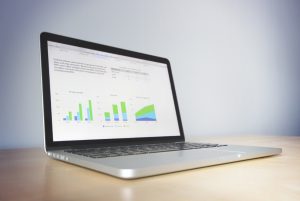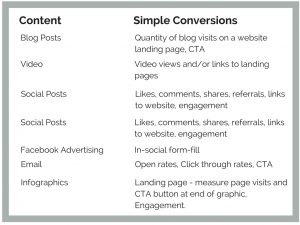With today’s advanced metrics revealing more consumer behavior patterns than ever before, the term conversion has risen to the top of the discussion food chain in marketing circles. What it hasn’t done yet is provide a crystal clear definition as to why a conversion should be looked at differently based on where the customer touch point location in the funnel is.
Top-of-Funnel Conversions
A top of funnel touch point conversion is totally different than the middle of funnel touch point conversions. Their objectives are different and the content’s role that’s in front of the consumer is also different. Typically, in the top of the funnel, the consumer is not yet aware of your brand and is in search of an answer to their problem. In some cases, they don’t even know they have a problem until your piece of content helped to become more aware of it. Your marketing content is designed to help educate the customer from a big picture perspective and nudge them deeper into your funnel with additional information. This is usually accomplished with lots of content published on particular channels.
The objective in a top of funnel prospective customer touch point is not to require the consumer to provide their personal information. It’s too early for that. Because they are not ready to purchase, your content should nurture them along by providing relevant, timely and engaging related content designed for educating and providing a holistic picture of the problem-solution. Here are a few ways to do that.
TIP: Think about adding more than one CTA in a piece of content as well as thinking about the next funnel stage (where you want the customer to go).
Depending on where you want the consumer to go next in the funnel also depends on how you measure at this stage above. If all of these above are all linking to a specific landing page, then the best measurement for conversion may be looking at how each one got to the landing page.
This may sound strange, especially for B2B brands, but you don’t want to gate top-of-funnel content yet. Make it searchable, easy to find and easy to read for the viewer. This is not a purchase conversion but an introductory or handshake conversion. At this stage, your brand is now introduced to the individual by helping them understand a big picture problem and ways that it can be solved.
Your business needs to create irresistible, free offers to draw customers into the sales funnel before you can woo them with your marketing automation and suave sales team. – Inboundmarketingagents
Middle-of-Funnel Conversions
It’s at this stage of the sales funnel where your conversion should lead to customer information like name, email address, cell phone, and at least the type of product or service they are interested in. Additionally, once you combine both the top of funnel information like type of media consumed, where they came from (social, email…) with the middle of funnel conversion information, you will have a complete picture of the consumer and their needs.
However, middle-of-funnel conversions don’t always have to be just a form-fill. With the correct series of landing pages, thank you pages, automated emails, and social media advertising forms, you can also serve them content that is perfectly aligned with their interest and urgency. This will really help to better define what their motivations are. With the advent of social media advertising and Google Adwords, conversions are happening off-site more and more each day and they are qualified leads, not cold ones.
Why Are Both Top and Middle Important?
Content designed for the top-of-the-funnel is like casting a wide net to catch fish. Not every consumer, however, will be interested in taking action to know more. But the ones that are interested based on their content consumption habits are somewhat warm in their interest. The conversions and actions at the top of the funnel will give you a good idea as to what type of content is consumed and if it’s generating interest and a conversion lead-in to purchase. If it’s not being clicked on or watched, you may want to think about changing it up. This very well could create a higher conversion rate at the top and in the middle.
As for the middle-of the-funnel, already warm prospects now will be asked to give their information because you have deeper, more product-specific content for them. This is a content offer that really helps to pre-qualify them. The metrics here are critical because they either reveal that your process and content is building your database, or it’s not. The combination of both top and middle conversions are needed so that your communication workflow can be on target with specific content and CTAs designed to meet the customer’s need.
Related Marketing Topics:
- Increase your Content Marketing ROI with These 3 Tips
- What is the Customer’s Problem You Plan to Solve?
- Does Content Marketing Connect With Customers?
Scott MacFarland is a lifelong marketer with a passion for all forms of marketing, especially digital. His perspective is firmly rooted in digital content marketing and social strategies that nurture and convert prospective customers. YourBrandExposed.com is a digital content marketing and strategy consultancy that works with businesses big and small to solve their most difficult questions surrounding digital. Let us know how we can help you.
Scott MacFarland – Chief Content Marketer, Digital Strategist
Twitter @scmacfarland
Photo Credit: Pexels | Pixabay – CC0 License
Sources:
https://static.pexels.com/photos/257949/pexels-photo-257949.jpeg
http://yourbrandexposed.com/what-is-the-customers-problem-you-plan-to-solve/


